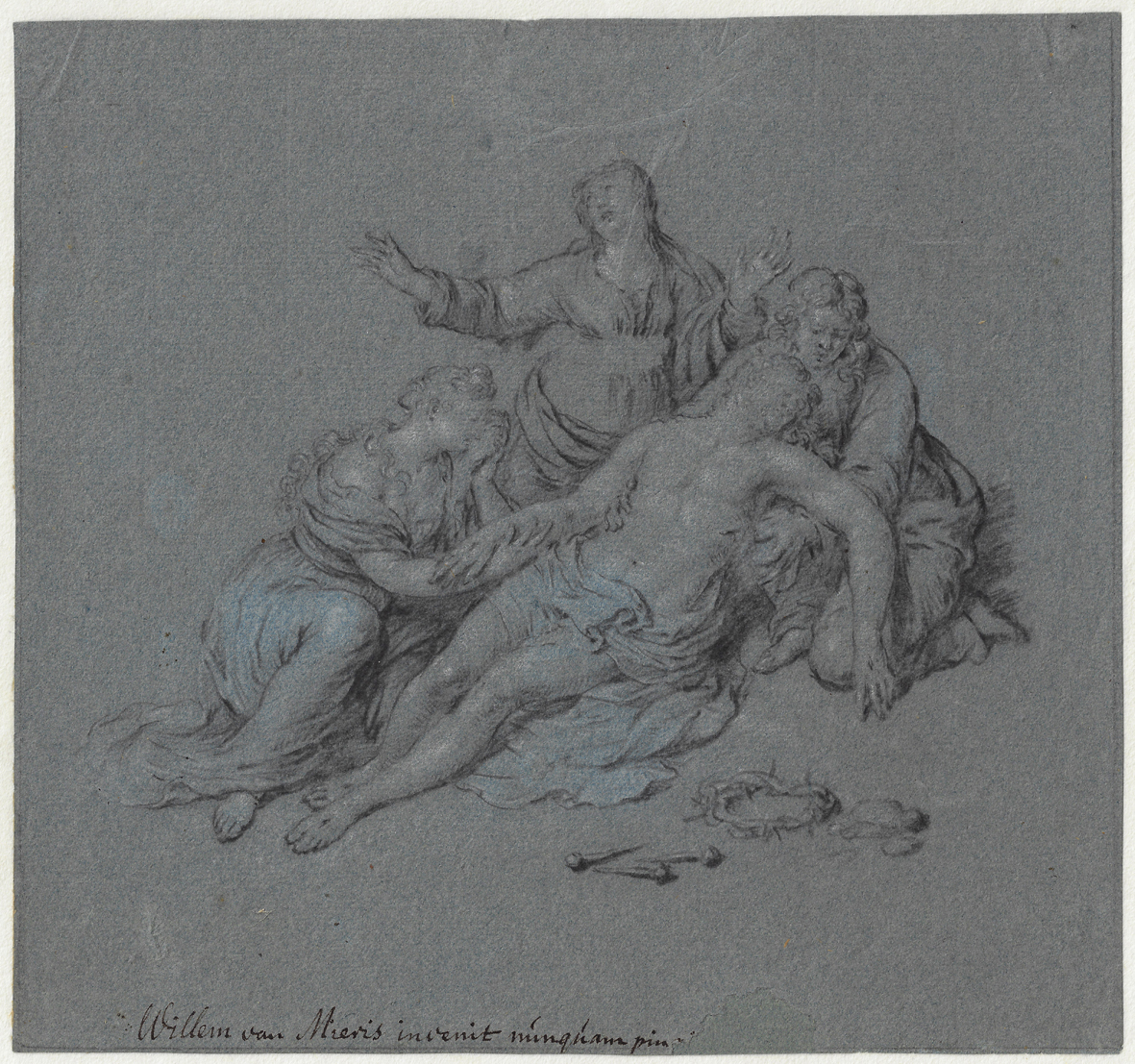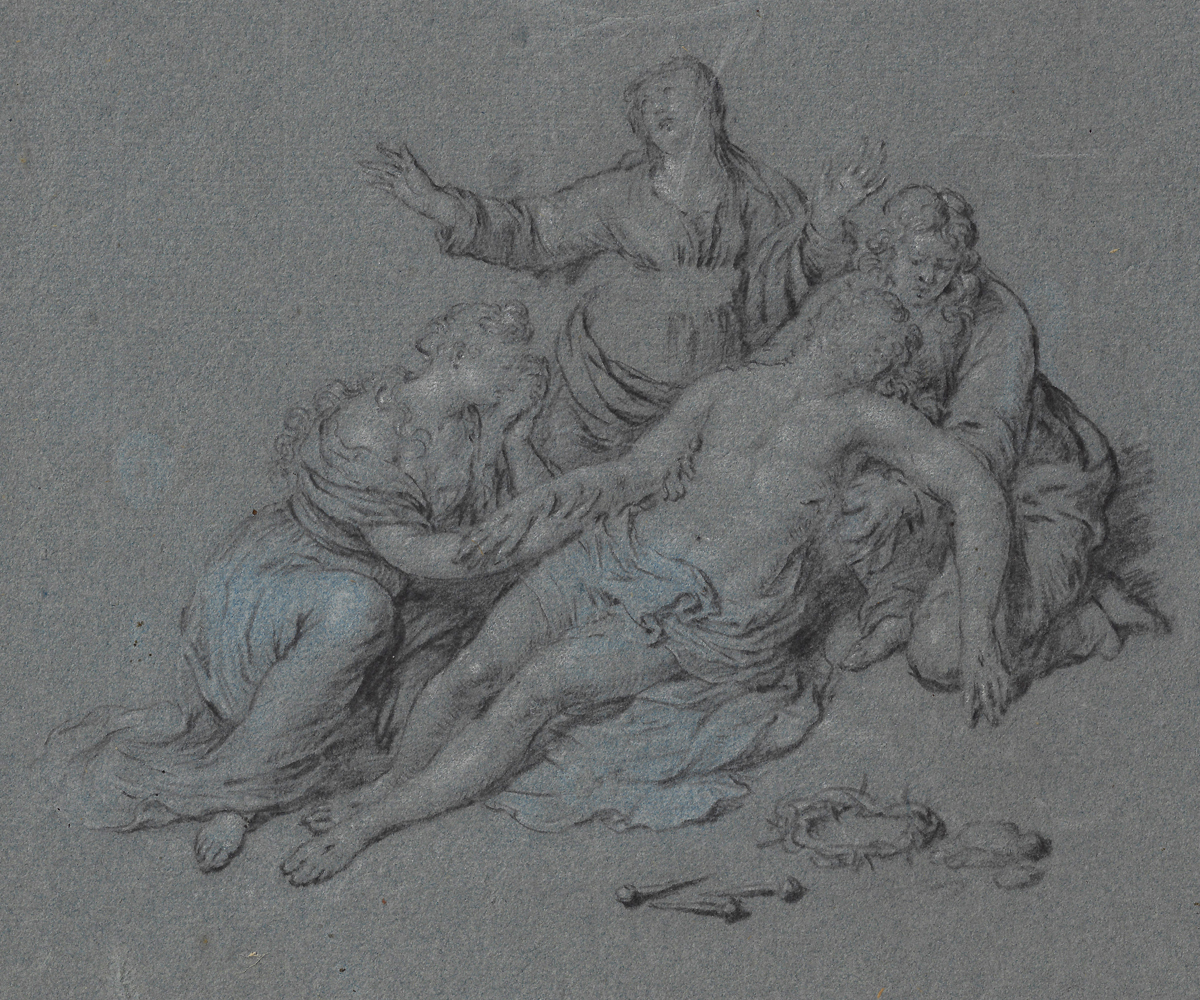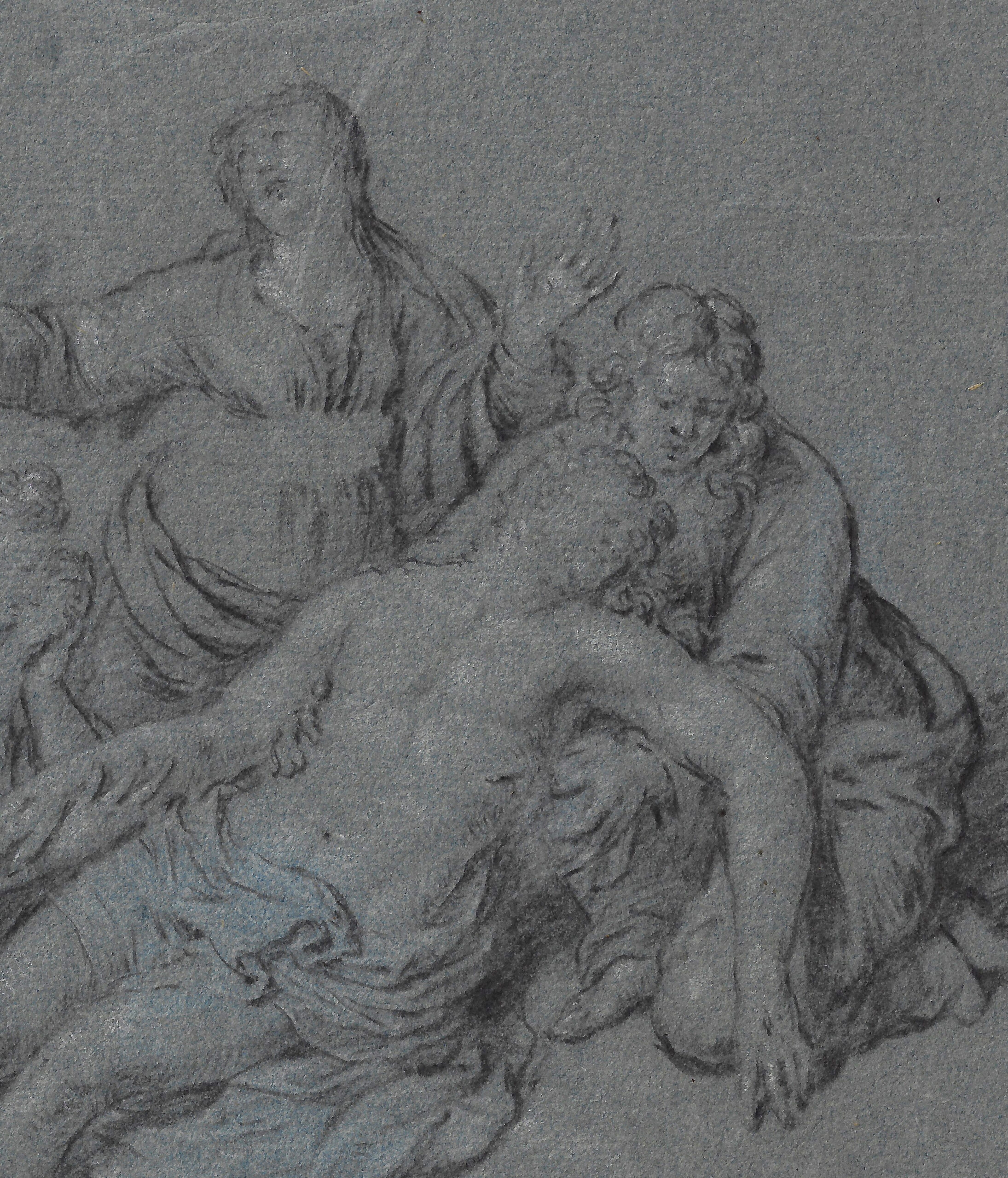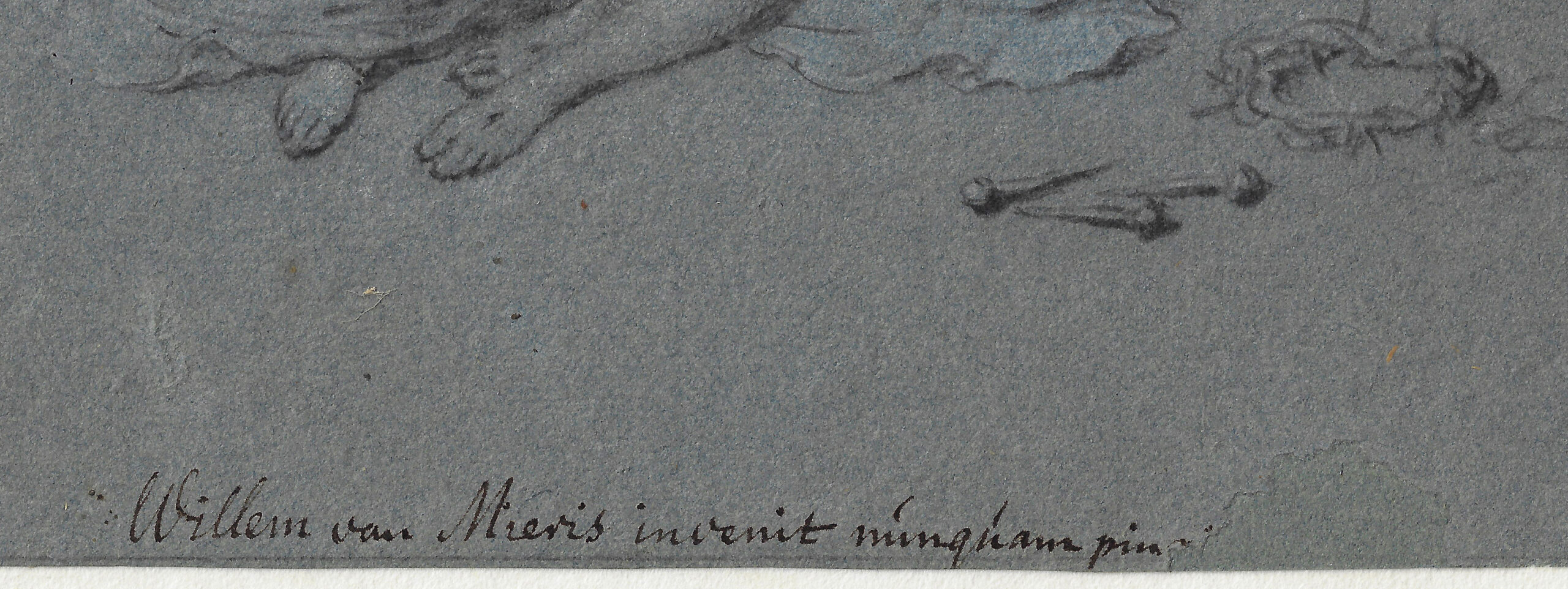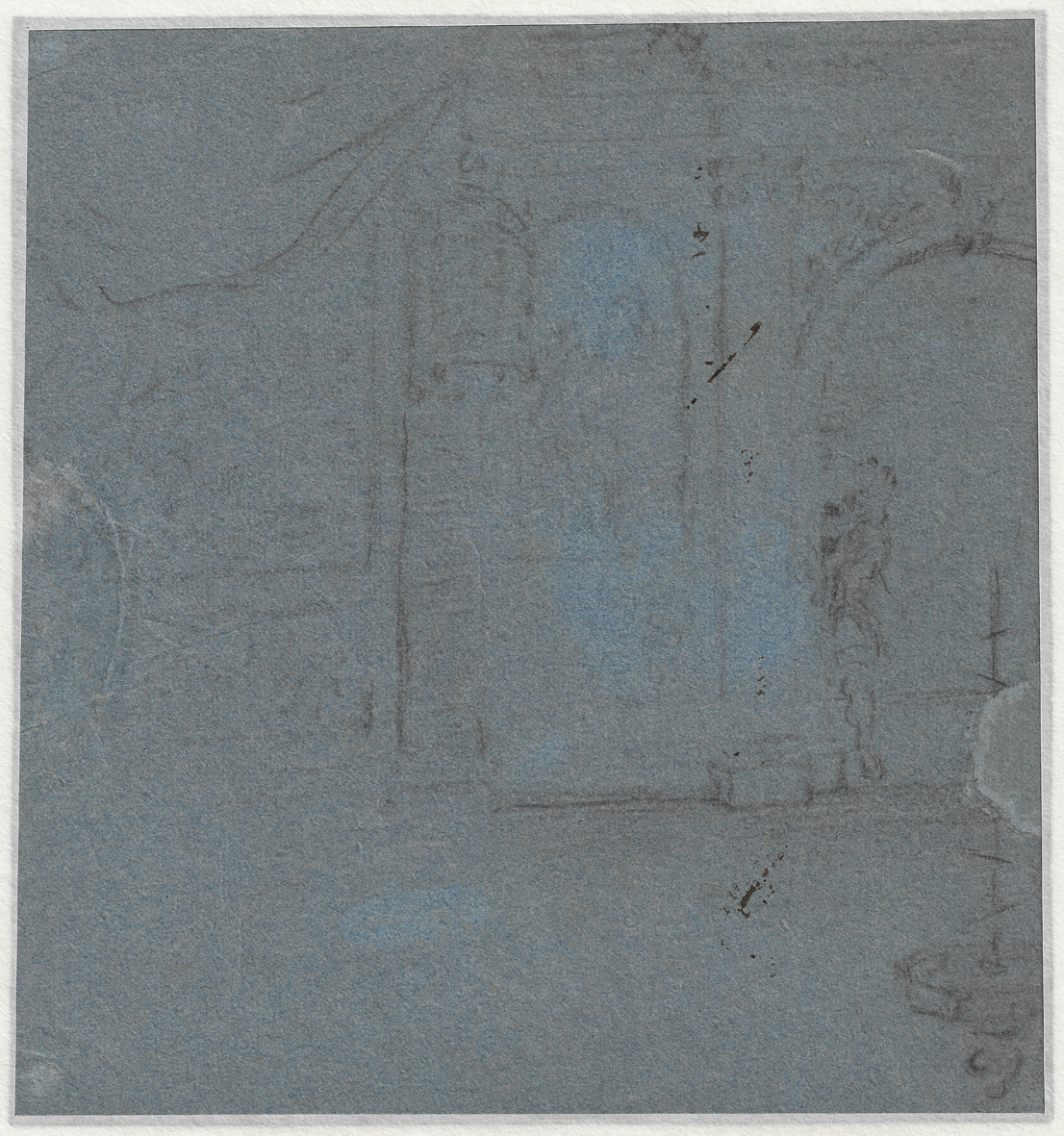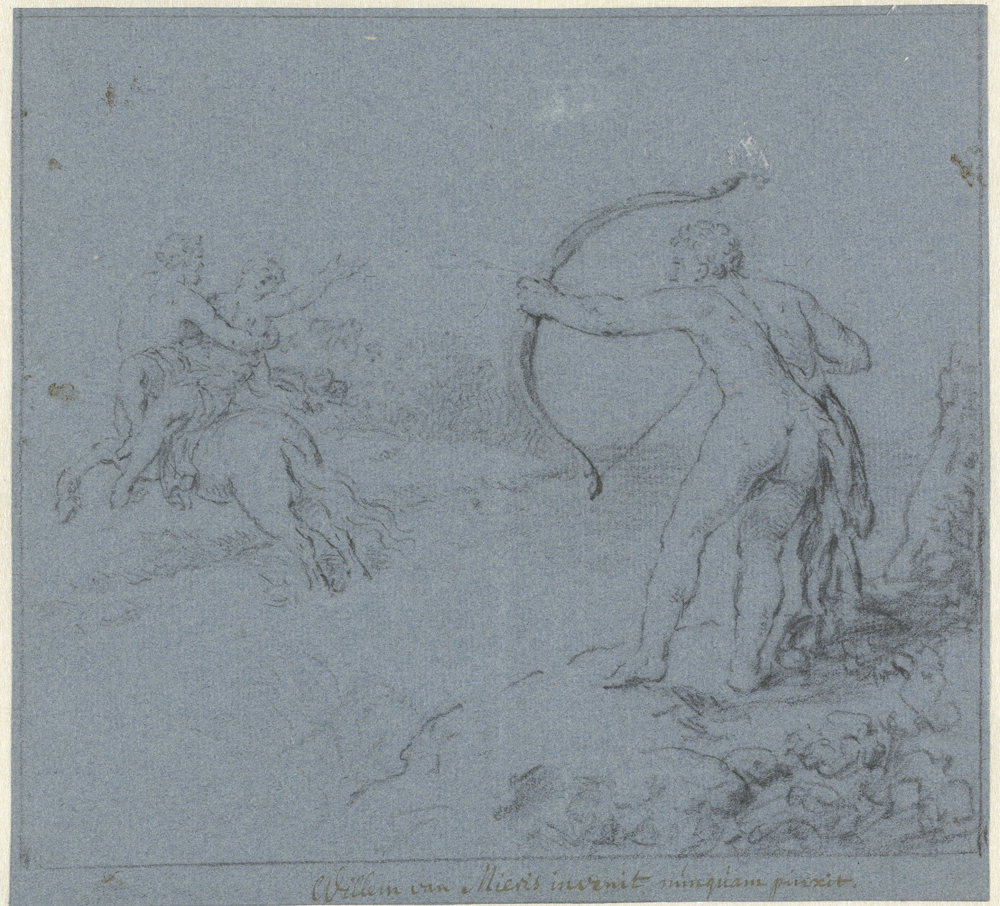WILLEM VAN MIERIS (Leiden 1662 – 1747 Leiden)
Willem van Mieris (Leiden 1662 – 1747 Leiden)
The Lamentation (recto); Architectural Study (verso)
Black and white chalk, graphite framing lines, on blue paper, 212 x 228 mm (8.4 x 9 inch)
Inscribed ‘Willem van Mieris invenit númqúam pinx’ (pen and brown ink, along lower edge)
Provenance
Private collection, The Netherlands
***
Willem van Mieris was born in Leiden as the second son of the painter Frans van Mieris the Elder (1635–81) and Cunera van der Cock (1629/30–1700).1 Like his older brother, Jan van Mieris (1660–90), Willem too became a painter. Naturally, both sons were instructed by their father, and according to Jacob Campo Weyerman (1677–1747), who knew Willem personally, the latter was so advanced that after his father’s sudden death in 1681, he was able to ‘to stand on his own two artistic feet.’2
By all accounts, Willem van Mieris’s career was remarkably successful. His standing was such that he sat on board of the Guild of Saint Luke a number of times. Moreover, together with Jacob Toorenvliet (1640–1719) and Carel de Moor (1655–1738), he founded the Leiden Tekenacademie (Drawing Academy) and although his enrollment at the Leiden University on 22 December 1695 was not related to an academic course of study (he was then thirty-three years old), Van Mieris was, in fact, learned.
Willem’s social position mirrored his success as a painter. He was one of the most famous painters of his time, his work was highly sought after, and he generally charged steep prices for it. In 1705, he could even afford to buy a house on the elegant Breestraat, where he would live for the remainder of his life. He also never had a shortage of important patrons, notably Petronella de la Court (1624–1707) and Pieter de la Court van der Voort (1664–1739). The most striking illustration of Van Mieris’s wide recognition is his contact with several foreign princely art collectors, including the Archbishop of Mainz and Elector of the Holy Roman Empire, Lothar Franz von Schönborn (1655–1729) and Duke Anton Ulrich von Braunschweig-Wolfenbüttel (1633–1714).
Van Mieris was also highly active as a draughtsman, favouring drawing in black and white chalk on blue paper, but also in coloured wash on vellum.3 Drawings on blue chalk were often made as preparatory sketches, while the ‘finished’ drawings in watercolour were intended for collectors of ‘papierconst’.
The present recently discovered moving drawing is a notable addition to Van Mieris’s known drawings. Depicting the three Maries lamenting the body of Christ on the recto and an architectural study on the verso, the studies were never used by Van Mieris in a finished painting, as is indicated by the fascinating Latin inscription ‘Willem van Mieris invenit númqúam pinx’, ‘Willem van Mieris invented but never painted [this composition]’. Identical inscriptions occur on three other drawings by Van Mieris, as was established by Dr Albert Elen:4 firstly, a drawing of Hercules shoots the Centaur Nessus, who attempts to carry off Deianira in the Rijksprentenkabinet, Amsterdam (fig);5 secondly, an Interior with a sitting woman and a street vendor, in the Royal Museum of Fine Arts in Brussels (inv. 2555) and thirdly a Farm interior with woman and child.6 Although the inscriptions are not thought to be autograph, they must have been applied by somebody with highly detailed knowledge of Van Mieris’s artistic production, possibly a family member or studio assistant.
1. The best biography of Willem van Mieris is that by Piet Bakker, ‘Willem van Mieris’, in: The Leiden Collection Catalogue, 3rd ed. Edited by Arthur K. Wheelock Jr. and Lara Yeager-Crasselt, New York, 2020–. https://theleidencollection.com/artists/willem-van-mieris/
2. ‘Op zijn eyge konstwieken kon flodderen’, Jacob Campo Weyerman, De levensbeschryvingen der Nederlandsche konstschilders en konstschilderessen, The Hague, 1729, vol. 3, p. 388.
3. For Van Mieris’s drawings, see Albert J. Elen, ‘ “Ongemeen uitvoerig op Perkament met sapverven behandeld”. De gekleurde tekeningen van Willem van Mieris uit de collectie Jonas Witsen’, Delineavit et Sculpsit, no. 15 (May 1995), pp. 1-22.
4. Elen, op. cit., p. 11, note 17.
5. Black chalk on blue paper, 195 x 213 mm, inv. no. RP-T-1905-186.
6. Auction Von Klinkosch, Vienna, 15 April 1889, lot 607.
